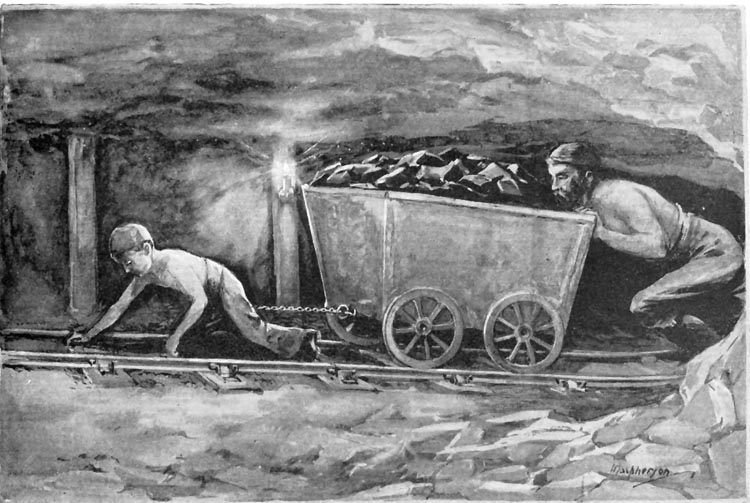By the mid-1800’s, power-driven machines had replaced hand labor for manufactured goods. To work these machines, factory owners turned to children, as they could be paid a lot less than an adult. Soon, child labor became a major problem in England and the U.S. as children were exploited for their cheap labor. These children would sometimes work 12 to 18 hours a day, 6 days a week and would only earn a dollar. Many of these children were also quite young, even beginning work before age seven. At times, children would have to work underground in coal mines and became ill from being so over-worked and starved for food. It is estimated that by 1810, around 2 million school-aged children were working 50 to 70 hour weeks.
As teachers and church and labor groups became outraged by the cruel conditions these children were working in, child labor laws came into practice. Britain passed the first laws regulating child labor from 1802 to 1878. These laws gradually shortened work hours, improved working conditions, and raised the age at which children could work. Eventually, the U.S. passed the Fair Labor Standards Act in 1938, which set the minimum working age to 16 during school hours, 14 for certain after-school jobs, and 18 for more dangerous jobs.
However, before these laws were made, authors like Charles Dickens and Elizabeth Barrett Browning helped to raise awareness for the cruel hardships’ children suffered while undergoing factory work. For example, in Browning’s poem “The Cry of the Children,” she addresses the cries children lament as they work in mines and manufactories. She seeks to elicit sympathy for these children with phrases such as:
“It is good when it happens,” say the children,
“That we die before our time!
Alas, the wretched children ! they are seeking
Death in life, as best to have !”
Here, the children admit that death would be preferable over continuing to work in the factories. In this way, Browning causes the reader to feel sympathy for the children as they confess that they wish to die before their time.
After eliciting compassion for these children, Browning then ends her poem with a cry for help:
“How long,” they say, “how long, O cruel nation,
Will you stand, to move the world, on a child's heart, —
Stifle down with a mailed heel its palpitation,
And tread onward to your throne amid the mart?
Our blood splashes upward, O our tyrants,
And your purple shews your path;
But the child's sob curseth deeper in the silence
Than the strong man in his wrath!”
Browning pleads with the nation to consider how much these children are suffering. She accusingly wonders how long these young children will be exploited and mistreated. Browning begs the world to see the children’s perspective as they sob while being trampled upon by tyrants.

"Child Labor." Reviewed by Milton Fried. The New Book of Knowledge. Grolier Online, 2014. Web. 3 Dec. 2018.
